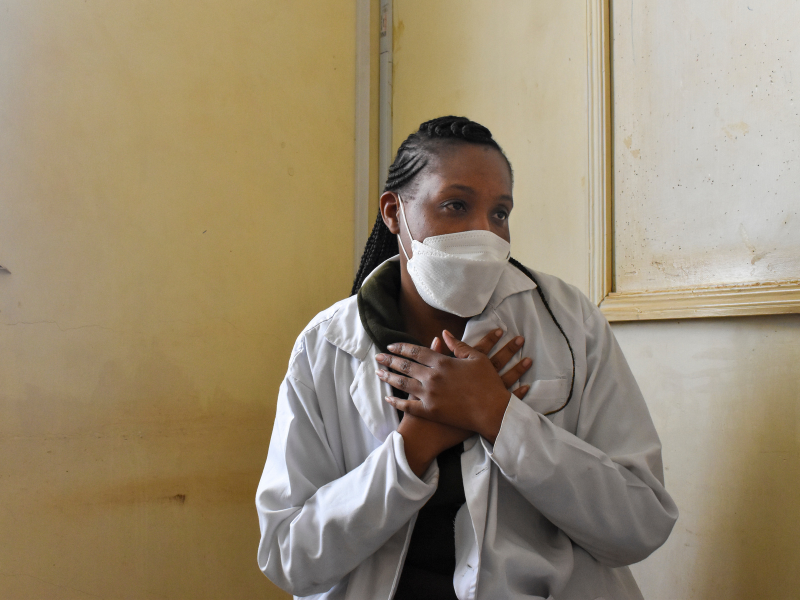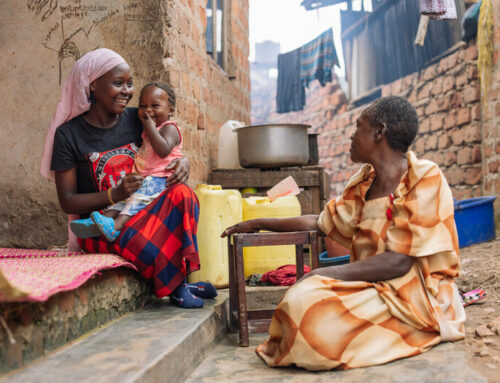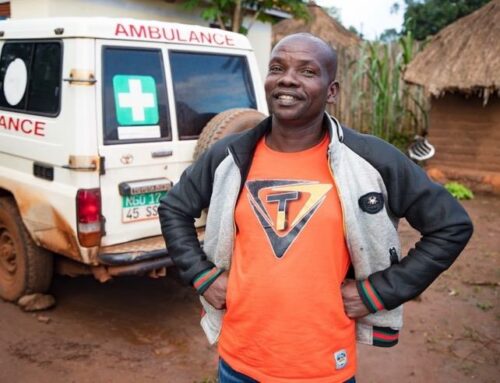“Changing a child’s life is something beyond joy.”
Meet Sheila, A Nutritionist from Amref Kenya

Sheila, a nutritionist at the Kibera Amref Health Centre, discusses the nutritional needs she sees among the center’s clientele.
(Photo: Lindsay McCoy, Michigan State University).
Working as a nutritionist at the Kibera Amref Health Centre in Kenya, Sheila has seen patients from all stages of life come to her office. “I deal with them all, youth and adults,” she said. “I deal with mothers, I deal with lactating mothers, yes. All of them.” When patients come to her office, Sheila provides a nutrition assessment, diagnosis, and interventions when needed. The final diagnosis is most often malnutrition. “We mostly check for weights, it’s called anthropometrics. So, weight, height. We do MUAC, which is mid-upper arm circumference for pregnant mothers.”
Because pregnant mothers who come to Sheila are eating for two, she can’t only rely on their weight, which is where the MUAC assessment comes in. Malnutrition is very common among the community members the center serves, in part due to the economic status of many of the patients.
Sheila said low income and unsteady jobs often lead to entire families becoming malnourished. “Maybe the mother has six children,” she said. “So, the last one is what we usually look at for malnutrition mostly. If the last child has it, it means the rest of the family has issues of nutrition because the last child is a representation of their family.”
When the COVID-19 pandemic began, it increased malnutrition for many families who could no longer find work, as many mothers in the community work as “house helps.” The fear of catching COVID-19 put this work to a halt. “They were not inviting house helps into their houses. So, the mother wasn’t getting just even $100 or so to feed their child,” said Sheila.

Sheila, a nutritionist at the Kibera Amref Health Centre, discusses the various protein sources she recommends to her clients.
(Photo: Lindsay McCoy, Michigan State University).
Malnutrition could also be a result of cultural traditions in the area. For example, many mothers believe that you cannot feed a child eggs until they are able to speak, otherwise, they will never learn to talk. “The baby will speak. It’s just that a long time ago they didn’t understand that an egg causes allergies a lot. They couldn’t explain it scientifically,” she said. Sheila said she now tries to educate mothers on why this tradition is outdated, and how to properly feed the children eggs in order to avoid allergies.
Another contributor to malnutrition is often the family unit. Sheila said that if a woman is married and becomes pregnant as a teenager, her nutrition status will be different from a pregnant adult. “You require more food and nutrients to nurture you and the baby. If you don’t have that, in terms of food, your child will be malnourished,” she said. Because of this, the issue of malnutrition is often cyclical. “If the mother is malnourished, chances are they are not going to eat well, then the child will be malnourished.”
Ending this cycle is what keeps Sheila so passionate about her work as a nutritionist. “The most exciting part is when you meet the mother and the child is cute and doing well,” she said. “She says ‘you treated my child, they’re cured, and go to school and are fine!’.”
Knowing that she is able to change a child’s life in terms of nutrition, and help educate mothers, through her work is what makes her the happiest, Sheila said. “Changing a child’s life is something beyond joy.”




